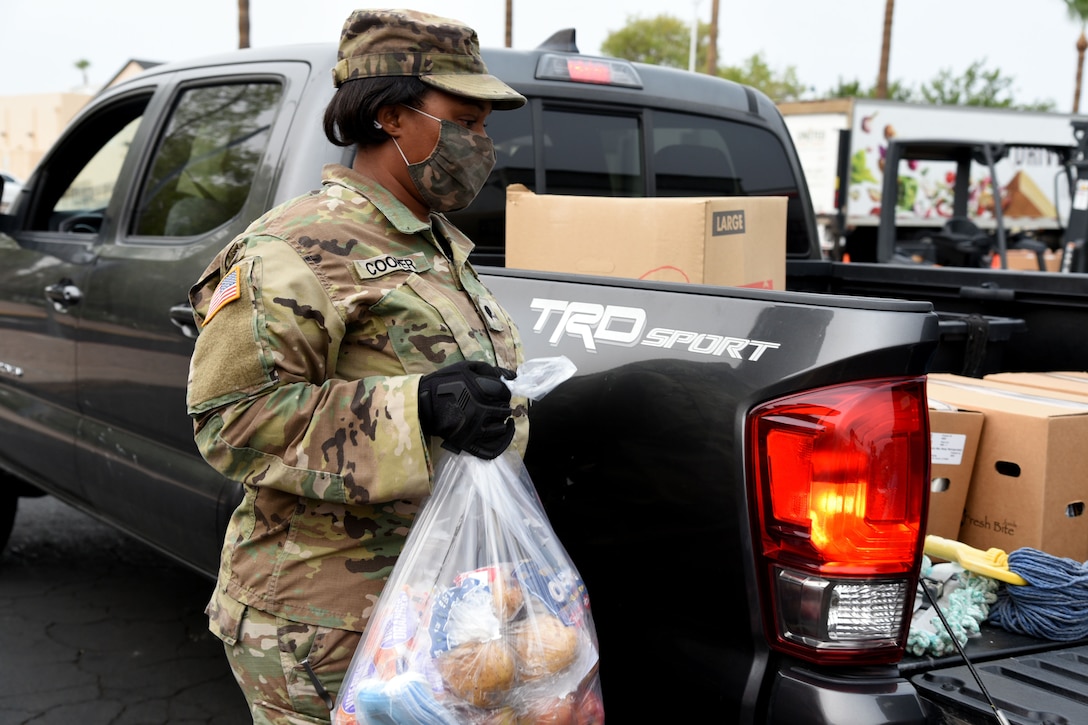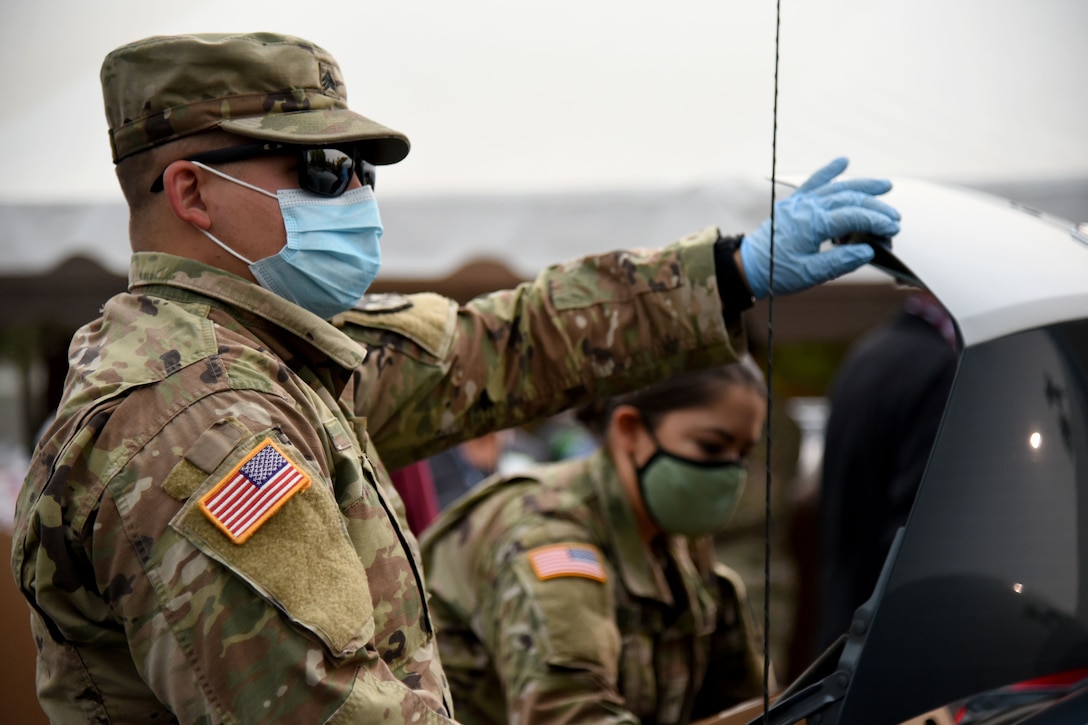An Oregon Army Guard HH-60M Black Hawk helicopter empties a water bucket onto flames from the Brattain Fire near Paisley, Ore., Sept. 15, 2020. Army helicopters are working with other aircraft battling wildfires across the state
Wednesday, September 16, 2020
Secretary of Defense Speech at RAND (As Prepared)
Sept. 16, 2020
Good morning everyone. Thank you to Michael Rich for that kind introduction, and to Dr. Edward Harshberger for moderating today’s discussion.
It’s great to be here at the RAND Corporation, with many of the thought leaders who have made significant contributions to national security policy for more than seventy years. RAND has played a vital role in connecting military planning with research and development decisions since its founding in the wake of World War II.
Just two weeks ago, I stood on the deck of the USS Missouri, in Pearl Harbor, to commemorate the 75th anniversary of the end of that conflict. In its aftermath, the United States, our allies, and partners led the creation of an international rules-based order, rooted in our shared values, that has supported stability and prosperity around the world for more than seven decades.
Yet this free and open order is now under duress. We all understand that because peace is never fully assured. The United States and its partners must continue to protect our founding principles and way of life, and we are committed to doing just that!
Today, in this era of great power competition, the Department of Defense has prioritized China then Russia, as our top strategic competitors.
These revisionist powers are using predatory economics, political subversion, and military force in an attempt to shift the balance of power in their favor, and often at the expense of others.
China for example is exerting its malign influence through its “One-Belt, One-Road” Initiative.This campaign has left weaker nations with crushing debt, forcing them to take economic relief at the expense of their sovereignty.Additionally, Beijing’s aggression and disregard of its commitments in the South and East China Seas – such as the sinking of a Vietnamese vessel and escorting of Chinese fishing fleets into the exclusive economic zones of Indonesia and the Philippines – are further examples of the CCP’s attempts to reshape the international order that has benefitted nations, large and small.
At the same time, Russia is overtly redrawing international borders. Moscow’s invasion of Georgia in 2008, annexation of Crimea in 2014, and sustained aggression in Ukraine demonstrates its blatant disregard for international rules and norms.
And both nations are expanding and modernizing their armed forces, and extending their capabilities into the space and cyber domains, in order to exert greater pressure against other nations.
Meanwhile, for nearly two decades the United States concentrated on fighting violent extremist organizations in low intensity conflicts that left us less focused and prepared for a high-end fight against near peer adversaries. And in the last decade, the Department was crippled by the devastating effects of sequestration.
For years our military was in a period of strategic atrophy, and our adversaries watched from the sidelines, searching for opportunities to erode our hard-earned gains.
Today, with a view of the world very different than our own, our emboldened competitors are using their growing power to coercively alter the strategic environment to our detriment.
Given these challenges, in 2018, the Department of Defense developed the National Defense Strategy, which stated that we are now in this era of great power competition. The NDS also directs us to adapt to this increasingly complex security environment in order to deter conflict, and if necessary, fight and win.
I am pleased to report that a great deal of funding and effort was put behind this strategy over the past three years to ensure the U.S. military is organized, manned, trained, equipped, and ready to compete, deter – and fight and win if necessary – in this new age.
During my confirmation hearing last year, I made clear that my highest priority would be the irreversible implementation of the NDS. This strategy tells us that in order to succeed, we must follow three lines of effort; first, enhance our lethality and readiness across the force; second, strengthen our alliances and build partnerships; and third, reform the Department to align our resources with our highest priorities.
Soon after becoming the Secretary of Defense, I met with our senior DoD leaders – uniformed and civilian – and we developed a list of ten targeted goals to advance implementation of the NDS aligned under its lines of effort.
Our first line of effort aims to maintain our advantages and continue outpacing the competition. To modernize our capabilities, we have successfully secured funding for game-changing technologies such as artificial intelligence, hypersonics, directed energy, and 5G networks. We have also made significant progress recapitalizing our strategic nuclear triad. Among our other efforts, we conducted a comprehensive review of the Future Naval Force to meet our requirements in the years ahead– something I will discuss in greater detail in a few moments.
We are also modernizing how we maintain our readiness to fight. We have re-reorganized our ready forces into Immediate Response and Contingency Response Forces. And we’ve implemented enhanced readiness concepts such as dynamic force employment – demonstrated recently by our bomber task forces in the Indo-Pacific and the European continent. We are also developing a modern Joint Warfighting concept, which will ultimately become doctrine, and ensure the whole of the joint force is far more effective than the sum of its parts.
Our second line of effort builds on our relationships with other Nations, an asymmetric strategic advantage that no rivals can match. To do so, we are implementing a coordinated plan, the first of its kind, to strengthen allies and build partners. In our priority theater, the Indo-Pacific, we have worked hard toward this end – as evidenced by my multiple trips throughout the region —all in an effort to push back on China and its bad behavior. This is part of our theater strategy based on three-pillars: preparedness, strengthening partnerships, and promoting a more networked region.
Our third line of effort drives us to reform the Department for greater performance and effectively manage our Fourth estate, which includes organizations such as the Defense Logistics Agency, Defense Health Agency, and the Missile Defense Agency. In doing so, we are redirecting our time, money, and manpower to our highest priorities while maximizing the use of every taxpayer’s dollar.
We have made great progress on this front with our Defense-Wide Review, where we identified $5.7 billion in defense reforms and efficiencies across the Fourth estate last year, and we are on track to identify billions more this year. We have also directed our Military Services to conduct clean-sheet reviews to identify savings and efficiencies, as well as to develop their plans for reform to the NDS. Our Combatant Commands are going through a similar review to consolidate and reduce legacy requirements in order to optimize our operational footprint.
Underpinning all three of these lines, and principal to many of our efforts, is to focus the Department on China. To fulfill this objective, we stood up a new Defense Policy office on China, and established a China Strategy Management Group to better integrate our enterprise. I also directed our National Defense University to dedicate half of its coursework to China, and I tasked the Military Services to make China the pacing threat in all of our schools, programs, and training.
These are just a few of our efforts to turn our attention to our priority theater, the Indo-Pacific. Not only is this region important because it is a hub of global trade and commerce, it is also the epicenter of great power competition with China. And in the face of destabilizing activities from the Peoples Liberation Army (PLA), particularly in the maritime domain, the United States must be ready to deter conflict, and if necessary, fight and win at sea.
So today, I want to talk to you about our efforts to modernize our military, specifically the world’s greatest Navy. And over the next few days here in California, I’ll get a chance to see first-hand, what we are doing to prepare our force for the high-end fight, as I visit the USS Carl Vinson, Naval Base Point Loma, and industry partners who are developing unmanned naval systems.
Over the past year, I’ve had a chance to visit Navy ships and units all across the globe, and have met hundreds of Sailors. And I can assure you that we command, without a doubt, the best and most capable Navy on this planet. No doubt.
But as the NDS states, our military does not have a preordained right to victory on the battlefield. Beijing and Moscow have studied how we fight, learning to exploit our vulnerabilities and developing asymmetric capabilities designed to counter our strengths.
The Chinese Communist Party, specifically, intends to complete the modernization of its armed forces by 2035. By 2049, it aims to dominate Asia as a world-class military. In addition to developing advanced weapons systems, Beijing is also investing in long-range, autonomous, and unmanned submarines, which it believes can be a cost-effective counter to American naval power.
I want to make clear that China does not have parity when it comes to our Navy. Even if we stopped building new ships, it would take the PRC years to match our capability on the high seas. Simple ship numbers don’t address the capabilities of the vessels being counted, nor the crews that man them. Nonetheless, we must stay ahead; we must retain our overmatch; and we will keep building.
To compete in a 21st century high-end fight, we will need a future fleet that meets the following operational attributes:
- Distributed Lethality and Awareness;
- Survivability in a high intensity conflict;
- Adaptability for a complex world;
- Ability to project power and demonstrate presence; and,
- Capability to deliver precision effects at very long ranges.
The future fleet will be more balanced in its ability to deliver lethal effects from the air, from the sea, and from under the sea. This fleet will be need to be marked by more and smaller surface combatants; optionally manned, unmanned, and autonomous surface and subsurface vehicles; unmanned carrier-based aircraft of all types; a larger and more capable submarine force; and a modern strategic deterrent.
At the same time, this fleet must be affordable in an era of tight funding; sustainable over the long term; and operationally available at higher rates. And it must have a robust and healthy industrial base, with modern shipyards and highly-skilled workers, that have the capacity to build and maintain the fleet we need.
That is why, earlier this year, I asked the Deputy Secretary of Defense to lead a Future Naval Force Study, tasked with assessing a wider and more ambitious range of “future fleet” options. The Navy, Marine Corps, the Office of the Secretary, as well as outside advisors conducted a comprehensive, cost and threat-informed review and analysis:
- First, they examined the fleet we currently have;
- Second, they explored future fleet options needed to retain dominance in 2045; and,
- Third, they wargamed these options, assessing the strengths and weaknesses of each combination of ships against different future mission sets.
This week I met with the Deputy Secretary and the team to discuss their findings. The results are a game-changer that reflect a good deal of serious work and effort based on facts and data. This study will serve as our guidepost as we program and build our future fleet, and conduct follow-on assessments. In short, it will be a balanced force of over 355 ships – both manned and unmanned— and will be built in a timely, relevant, and budget-informed manner. And we will build this fleet in such a way that balances tomorrow’s challenges with today’s readiness, and does not create a hollow Navy.
To achieve this outcome, we must increase funding for shipbuilding. This means we must get back to the same levels of spending dedicated for shipbuilding in the Navy budget that the sea service committed during the Reagan era – 13%, as compared to today’s 11%. This is something both the Secretary of the Navy and I are committed to pursuing.
As an example of where we are headed, earlier this year, the Navy granted a $795 million contract to purchase the first ship of a new class of guided missile frigates – with an option to purchase nine more totaling nearly $5.6 billion. This is the first new major shipbuilding program the Navy has sought in more than a decade. These ships will support the National Defense Strategy across the full range of military operations, with increased lethality, survivability, capability, and capacity to conduct distributed warfare—a key requirement borne out by the Future Fleet study.
As I visit with industry partners over the next few days, I will learn more about the Navy’s latest transformational capabilities – unmanned surface vessels and unmanned undersea vehicles. We are making solid progress on this front. Earlier this month, for example, the Sea Hunter prototype completed operations with the USS Russell, demonstrating various aspects of manned and unmanned teaming. We are planning on-going training events to continue developing tactics, techniques, and procedures for these platforms. These efforts are the next step in realizing our future fleet, one in which unmanned systems perform a variety of warfighting functions, from delivering lethal fires and laying mines, to conducting resupply or surveilling the enemy. This will be a major shift in how we will conduct naval warfare in the years and decades to come.
Finally, this future Navy and Marine Corps will employ novel concepts such as Distributed Maritime Operations and Expeditionary Advanced Base Operations, which will modernize the way we fight as they enable our new Joint Warfighting concept, and ultimately doctrine, for the 21st century.
Over the course of our history, the United States Navy evolved from the earliest wooden frigates of the Revolution to the low profile ironclads of the Civil War, and from the enormous steel battleships of Teddy Roosevelt’s Great White Fleet to Admiral Rickover’s “nuclear navy” of the Cold War, all the way up to today’s powerful supercarriers. Each one of these eras was marked by great technological change and new capability.
Today, we are at another inflection point – one where unmanned technologies and long-range precision weapons will play an increasingly leading role. The U.S. military, including the Navy, must adapt to that future as the character of warfare changes.
Building this future fleet and maintaining our maritime superiority now and into the future will require a whole-of-nation approach across government, industry, and academia.
To our private sector partners, particularly in shipbuilding, we must continue to work together to promote a robust and healthy industrial base with modern shipyards, infrastructure, and highly-skilled workers. We will need your help to match our level of ambition in the coming years, on cost, performance, and schedule.
For our partners in Congress, this means we need your support to continue our momentum, namely through adequate, sustained, predictable, and timely budgets.To support critical next-generation capabilities, our future budgets must be able to free up those resources by divesting from legacy systems and lower priority activities.We would also like the authority to put unused end of year Navy funding directly into the shipbuilding account, rather than see it expire.We need Congressional support to get these things done.
To our partners in academia and at think tanks, such as RAND, we need your “outside the box” thinking, your research, and analysis to help us adapt to this increasingly complex and challenging environment; to help us refine our future fleet plans and warfighting concepts in follow on studies; and to do so faster, in order to outpace our strategic competitors.
Finally, to our allies and partners, know that we are committed to preserving the international rules-based order that we have all benefitted from for more than 75 years. We urge you to increase your defense spending, and to make the needed investments to improve your capabilities and capacity, just as we are doing with our future fleet --- to protect our mutual interests, preserve our security, and defend our common values.
We all have a collective responsibility to prepare for the challenges of the future – while addressing the security issues of today. We cannot be complacent and must recognize the shifting landscape, otherwise we risk inviting greater aggression and further challenges to our shared values and security.If we can do this, I am confident that we will be able to maintain the rules-based order – that has given all of us security and prosperity – for many more generations to come.
Thank you and I look forward to our discussion.
Troop Delivery
Arizona Army National Guard service members prepare and deliver boxes of groceries to area residents at a local food bank in Mesa, Ariz., Sept. 11, 2020. Arizona Citizen-soldiers and Airmen continue to support grocery stores, food banks and other community needs during this state of emergency response.
Soldier Delivery
Arizona Army National Guard service members prepare and deliver boxes of groceries to area residents at a local food bank in Mesa, Ariz., Sept. 11, 2020. Arizona Citizen-soldiers and airmen continue to support grocery stores, food banks and other community needs during this state of emergency response.
Acting Under Secretary of Defense for Policy Dr. James Anderson Co-Chairs the 11th Strategic Security Policy Dialogue in Singapore
Sept. 16, 2020
Acting Under Secretary of Defense for Policy Dr. James Anderson and Singapore Permanent Secretary for Defence Chan Heng Kee co-chaired the 11th Strategic Security Policy Dialogue in Singapore today.
They discussed regional developments, including the COVID-19 response across the region, developments in the South China Sea, counterterrorism, and the upcoming ASEAN Defense Ministers’ Meeting-Plus.
The Acting Under Secretary and Permanent Secretary also used the occasion to discuss relevant areas of bilateral defense cooperation, including continued U.S. military access, Singapore’s future fighter detachment presence in Guam, cybersecurity, and defense technology cooperation.
They affirmed the importance of these annual discussions, and all bilateral defense dialogues, for strengthening cooperation and deepening the countries’ trusted partnership.
Secretary Esper Travels to California; Meets With Local Defense Industry Companies and Visits Indo-Pacific Power Projection Platforms
Sept. 16, 2020
Secretary of Defense Dr. Mark T. Esper embarks
Wednesday, Sept. 16, on a three-day trip to the West Coast. During his
trip, the Secretary will deliver remarks on National Defense Strategy
Implementation at the RAND Corporation and meet with West Coast-based
defense industry partners critical to the defense industrial base to
discuss the impacts of COVID on their workforce and highlight efforts to
prepare for future near-peer competition.
Secretary Esper will also tour Navy and Marine bases and platforms
critical to maintaining naval power across the Indo-Pacific region, to
include a visit to USS Carl Vinson and Marine Corps Base Camp Pendleton.
Finally, he will gain a firsthand assessment of survey efforts aboard
USS Bonhomme Richard and meet with California National Guard service
members helping to fight the wildfires impacting the region.
Wednesday's remarks at the RAND Corporation will be live-streamed on Defense.gov and at https://www.zoomgov.com/j/1601280892.
Those wishing to dial-in should call (669) 254-5252 or (646) 828-7666.
For more information please visit the RAND Corporation website.
Eastern Air Defense Adapts to Continue Mission While Avoiding COVID-19
Sept. 16, 2020 | BY Timothy Jones, Air Force , New York National Guard
The COVID-19 pandemic has forced military units both large and small to find creative ways to maintain a healthy force while still defending the nation.
One of these organizations is the 224th Air Defense Group, the New York Air National Guard unit that provides the personnel for the Eastern Air Defense Sector's federal mission.
As a headquarters element of the Continental U.S. North American Aerospace Defense Command/1st Air Force, EADS defends the area east of the Mississippi River against possible air attack. It's an all day, every day, no-fail mission.
In March, Army Maj. Gen. Raymond Shields, the New York adjutant general, ordered the state's Title 10 federal missions to continue without interruption. The 224th responded immediately. Initial efforts focused on the Battle Control Center.
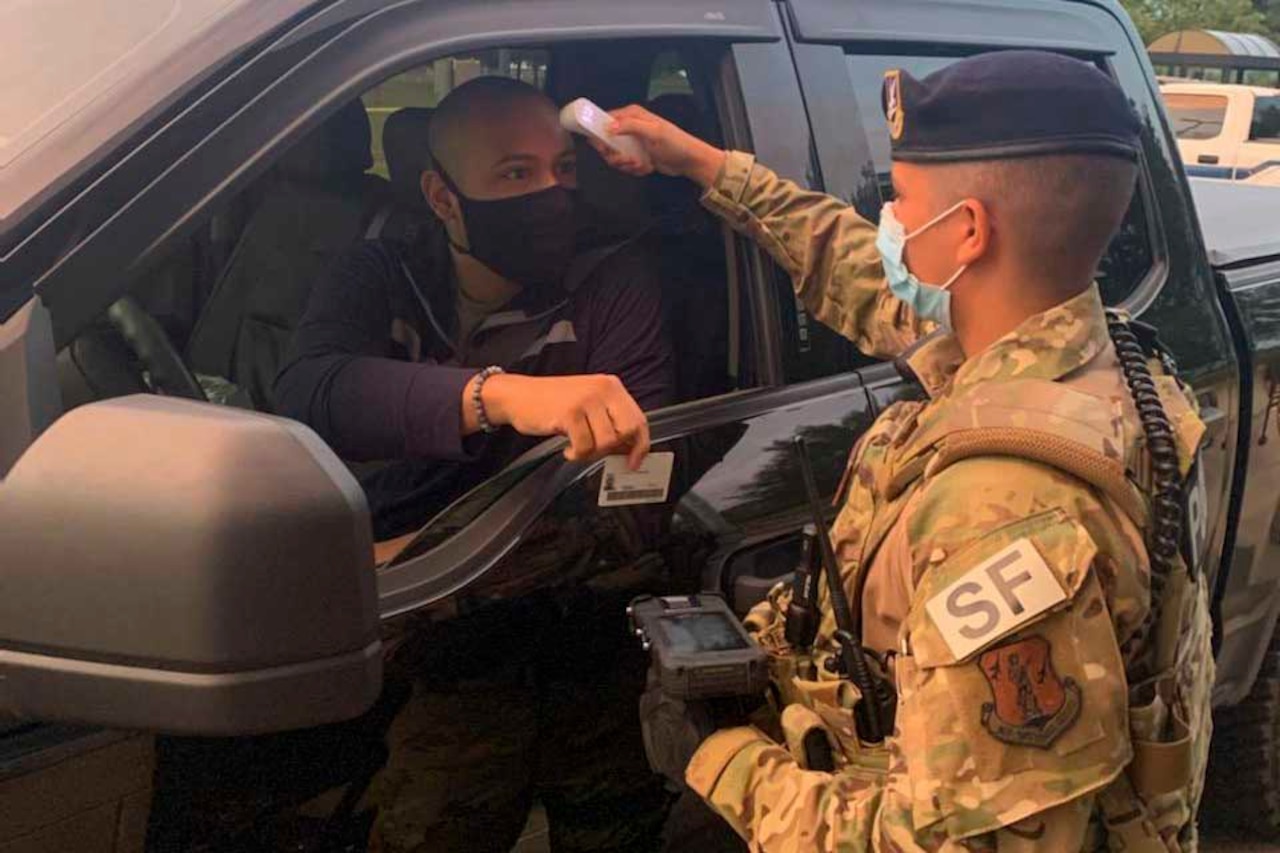
An operations floor housed within a restricted facility, the BCC receives radar and communication feeds from sources across the eastern U.S. This data is used to build a constant, real-time air picture of the air traffic east of the Mississippi River.
Airmen at the BCC monitor the air picture around the clock. They determine whether a radar track is an inattentive pilot, a flock of birds or a threat.
When it could be a threat, the BCC takes action to counter it, which can include scrambling fighter aircraft.
Computers, radars and radios are key components of the BCC. The most essential component however, are healthy, well-trained airmen.
"We can't create trained air battle managers, radar technicians, and weapons and aircraft controllers overnight. And there's no place we can get them from quickly," said Air Force Col. Paul Bishop, the EADS commander. "Making sure our core operational force remains healthy is really the only way we have to achieve mission assurance."
At the pandemic's outset, a dispersion and isolation strategy was put in place.
All non-essential personnel began teleworking, reducing the transmission threat to staff on the operations floor and other vital areas.
This was reinforced by strict social distancing protocols, mandatory mask-wearing, constant reminders to wash hands and stringent equipment and facility cleaning measures.
The most labor-intensive step was re-designing the operations floor to meet social distancing guidelines. Dozens of monitors, computers and desks were rearranged or removed, and hundreds of cables and wires were re-routed.
Completed in mid-August, the re-design allows personnel to maintain six feet distance during both real-world operations and training missions.
These measures have been successful, Bishop said.
Despite New York's high COVID-19 case counts early in the pandemic, only one EADS member contracted the virus in the last six months.
"The member was exposed outside the facility and quickly recovered," Bishop added.
As the pandemic continues, commanders have responded by instituting additional protective measures.
The centerpiece of the new measures has been education, said Air Force Col. Joseph F. Roos, the commander of the 224th Air Defense Group.
"We have an intelligent work force clearly focused on remaining healthy, and it's made communicating the protective measures and continually evolving health information much easier," he said.
"We're helped by the fact that our airmen and civilian employees realize that it's not just about them," Roos added.
"Our members live in the surrounding communities. Their spouses work at local businesses, and their children attend local schools. They're invested in eliminating the spread of COVID-19 and are very receptive to the health information provided to them," he said.

Installation health screenings were implemented in June. Security personnel conduct mandatory temperature checks at the facility's gate and ensure members are healthy before allowing entry.
Virtual systems like Microsoft Teams and Zoom are used for staff meetings and drills, reducing transmission risks.
Even existing technologies, such as the ultraviolet disinfection system on the BCC's air handlers, play a role.
Installed in 2019 to reduce dust and dirt, the UV system destroys more than 99% of all airborne contaminants, including viruses, providing an unseen layer of defense in the mission assurance battle.
"Technology has been very helpful," Roos said. "It's enhanced our operation in several areas, but the fundamentals are still the fundamentals, and we stress them every day: wear your mask, stay six feet apart, wash your hands and only come to the office when it's necessary."
It was apparent early on that the "isolation and dispersion" strategy could wreak havoc on the ADG's morale and mental health, Bishop said.
For airmen used to working long shifts shoulder-to-shoulder on a crowded operations floor and in small offices, the sudden switch to limited manning was jarring, he said.
"It was evident from the start that one of our biggest challenges was keeping our airmen connected," Bishop said. "It's hard. Nothing replaces in-person communication, but we've taken multiple steps to let our people know they are not alone."
To boost morale, the ADG has continued with virtual promotions and awards events, broadcasting them online so members can celebrate the successes of their fellow airmen.
The unit has also hosted a series of online social events, such as the traditional first Friday gatherings.
These efforts have been augmented by the careful management of manpower to limit fatigue. Leaders at all levels have also made it a point to constantly remind staff of the air defense mission's importance and the importance of each airman.
"We've successfully navigated the last six months and provided the mission assurance our leaders demand and the nation requires," Bishop said. "Our effort has been successful because our airmen and civilians have done everything necessary to keep us safe and healthy."
Soldiers Assure Operational Readiness for Global Partner Exercise
Sept. 16, 2020 | BY ARMY SPC. ISAIAH MATTHEWS , Georgia Army National Guard
To minimize the spread of the virus and preserve the safety and readiness of the force, the Defense Department and the Department of the Army have partnered with the Republic of Georgia to achieve acceptable results for troop safety. U.S. and Georgian medical personnel are working together to screen and test soldiers on the Vaziani Military Base Training Area throughout the exercise. Operational readiness is vital during a global public health crisis.
"Each soldier was administered a COVID-19 test at their home station 72 hours prior to coming to Georgia," Army Sgt. Carlos Mayfield, a combat medic with the 557th MCAS and noncommissioned officer in charge, said. "They must have received a negative response on that test. Upon arriving in Georgia, all the documentation with the negative test results was provided to the host nation."
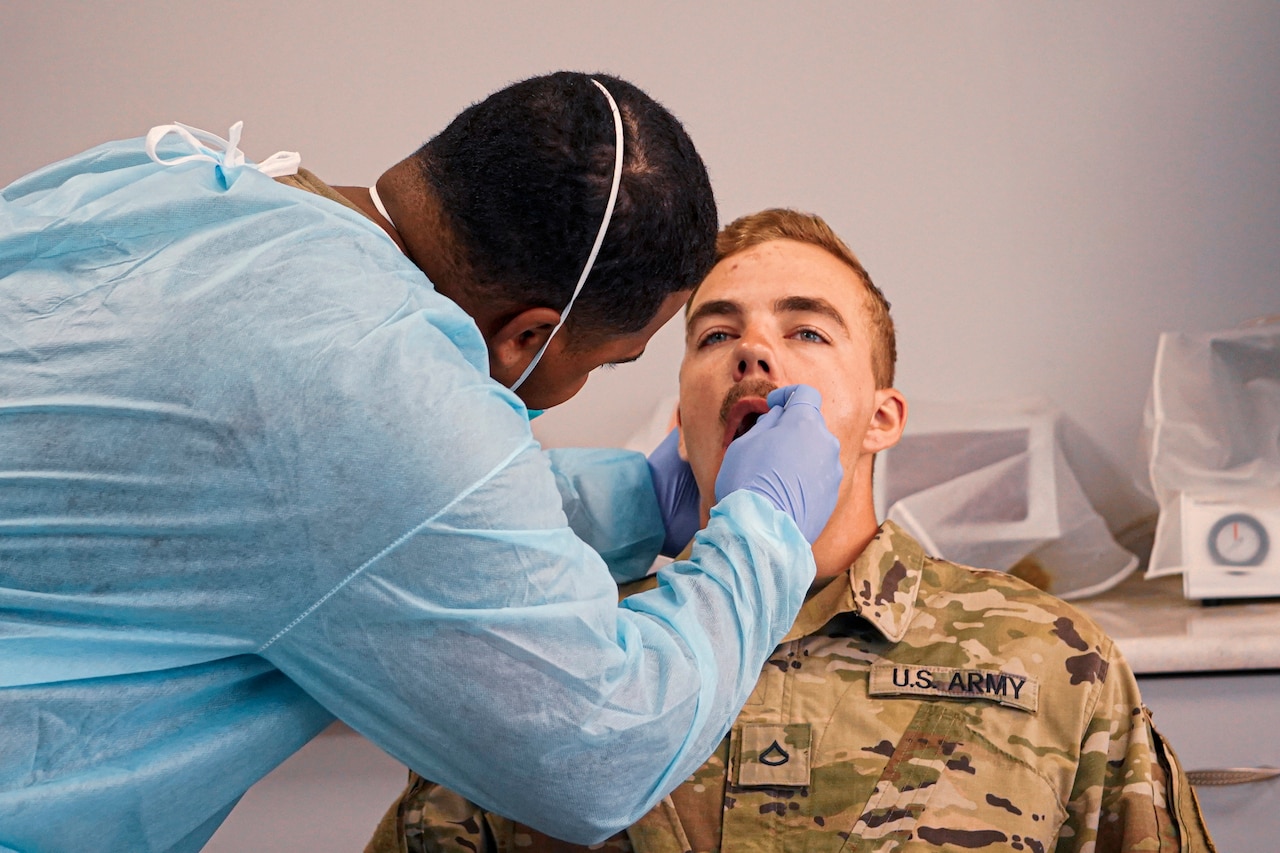
All U.S. soldiers are required to complete COVID-19 upon entering and exiting quarantine to reduce the risk of exposure and transmission in Georgia.
Mitigation measures put in place required exercise modification and changes. Some of the changes included additional testing, physical distancing, hand washing and wearing personal protective equipment such as face masks. Elements of Noble Partner 20 were altered, such as the planning timeline and training events within the exercise.
The Georgia Army National Guard remained committed to the exercise despite their ongoing involvement in their country's COVID-19 mitigation efforts. U.S. Army Staff Sgt. Maurice Taylor, a combat engineer with Alpha Company, 177th Brigade Engineer Battalion, arrived in the country of Georgia to support the unit's mission and work with Georgian defense forces.
"We're in a different country," Taylor said. "I think we need to show that we can train soldiers and be safe at the same time. My soldiers know that if they have something going on, they can let the medical guys know." Army Col. Jason Fryman, Noble Partner 20 U.S. Exercise director, realizes the importance of protecting the force.
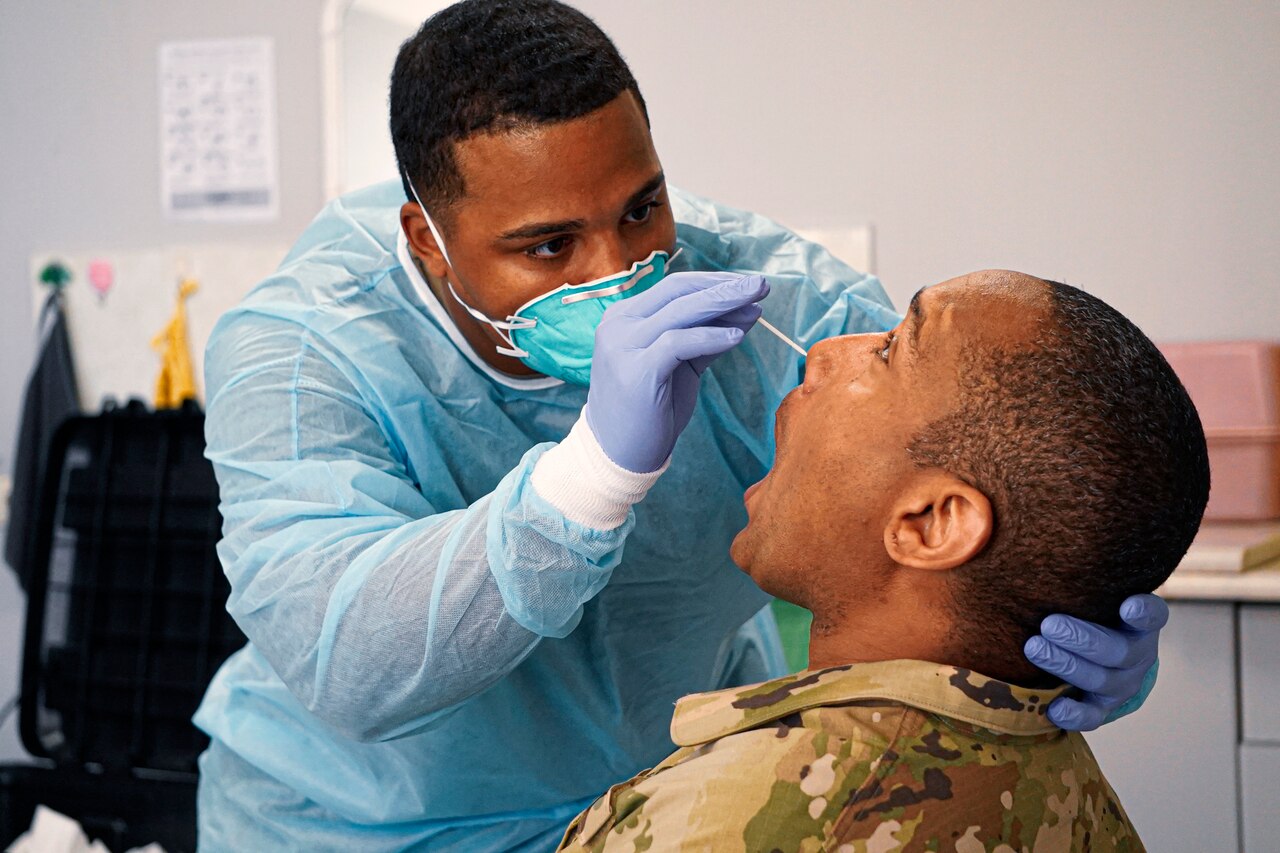
Fryman said all traffic in and out of the training area is restricted, and there are PPE and social distancing requirements for all soldiers. Soldiers are going through random testing to ensure the control measures in place are effective.
U.S. forces routinely work and train with Georgian defense forces conducting various exercises. The U.S. Army's presence in Europe promotes stability across the Caucasus Region and across Europe. Participation in joint multinational exercises enhances professional relationships and improves overall coordination with allies and partners during a crisis. The multi-domain realistic training improves interoperability and partnership capabilities among participating nations while enhancing global security.
DOD Officials Discuss Fire-Fighting Foam Replacement, Remediation Efforts
Sept. 16, 2020 | BY David Vergun , DOD News
Maureen Sullivan, deputy assistant secretary of defense for environment; and Herbert Nelson, director of the Strategic Environmental Research and Development Program and Environmental Security Technology Certification Program, testified at the House Armed Services Committee's Readiness Subcommittee hearing.
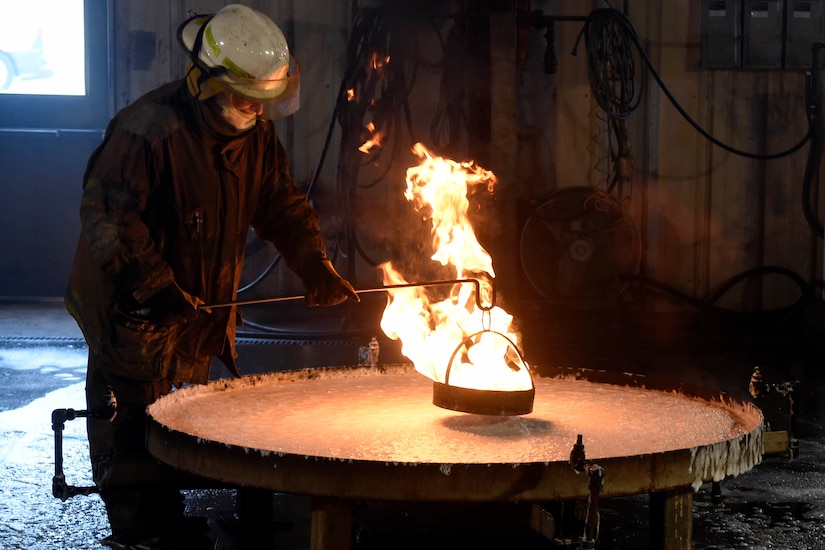
PFAS refers to the entire class of per- and polyfluoronated alkyl substances, of which perfluorooctane sulfonate, or PFOS, and perfluorooctanic acid, or PFOA, are the most well-studied substances. These substances are also present in many industrial and consumer products because they increase a product's resistance to heat, stains, water and grease.
On May 19, 2016, the Environmental Protection Agency issued the Safe Drinking Water Act lifetime health advisories and recommended actions for drinking water systems with individual or combined levels of PFOS and PFOA greater than 70 parts per trillion.
Sullivan said DOD is leading the way to address these substances. Over the last four years, the department has committed substantial resources and has taken action to respond to concerns with PFAS.
In July 2019, the PFAS Task Force was created to ensure a ''coordinated, aggressive, holistic approach on department-wide efforts to proactively address PFAS,'' she said.
The federal cleanup law, known as the Comprehensive Environmental Response, Compensation and Liability Act of 1980, provides a consistent approach across the nation for cleanup, which DOD adheres to, Sullivan said.
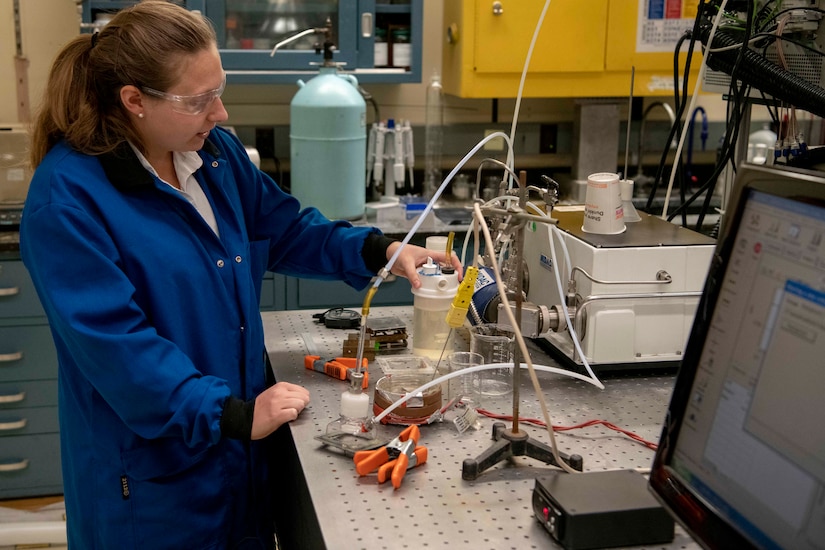
The department prioritizes sites for action using CERCLA risk-based processes to address sites that pose a greater potential risk to human health and the environment, she testified. These sites are in various stages of investigation, assessment and cleanup.
There are currently about 200 airports throughout the department, which mostly use AFFF, Sullivan said, noting that some of those airports are operated jointly with commercial aviation. The department is partnering with the Federal Aviation Administration to ensure these airports maintain the current level of protection for passengers, crews and equipment.
''DOD's priority is to quickly address PFOS and PFOA in drinking water above the EPA's lifetime health advisory, where DOD is the known source,'' she said.
To prevent further releases into the environment, DOD limits the use of AFFF to responses to emergency events and it is no longer used for land-based testing and training, she said. Furthermore, the department treats each release of AFFF as a chemical spill response.

Current AFFF used by the department contains PFAS, but not above 800 parts per billion, she said.
Unfortunately, none of the commercially available PFAS-free foams meets DOD’s strict safety standards for putting out fires quickly, she said, adding that besides putting out aircraft fires quickly, foams with PFAS are particularly effective at putting out large industrial or structural fires and overturned vehicles that are on fire.
Nelson said DOD is conducting research into developing PFAS-free foams that meet DOD's safety requirements, as well as evaluating any new commercial foams. He noted that the research is a collaborative effort that includes DOD's own laboratories, other federal agencies, industry and academia.
SERDP initiated research shortly after the EPA released its 2009 provisional health advisories for PFOS and PFOA, he said.
That research can be categorized into four parts, he said:
- Sampling and analysis;
- Understanding how PFAS moves and breaks down in the environment in order to predict what sites may be more likely to be of concern;
- Understanding how PFAS affects wildlife such as fish and birds; and
- Remediating PFAS impacted sites.
Regarding AFFF, there is also a four-pronged research effort, he said:
- Developing effective PFAS-free foams;
- Demonstrating the performance of commercially available and developed foams in large-scale testing;
- Studying the ecotoxicology of any replacement compounds; and
- Looking for strategies for cleaning out firefighting hardware contaminated by AFFF.

